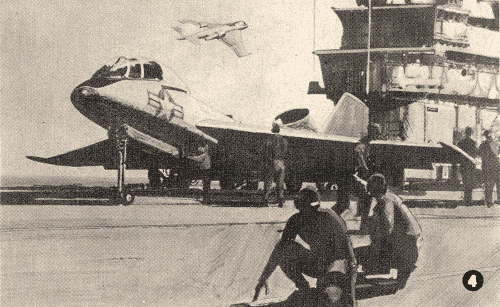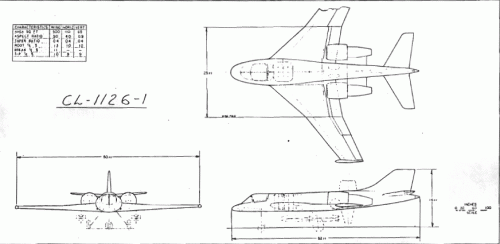- Joined
- 14 June 2006
- Messages
- 2,300
- Reaction score
- 557
Maybe linked to the efforts that produced the CL-1054, CL-1126 TDN was assigned to another attack aircraft for the Navy, capable of VTOL and CTOL modes of operation. Shown is CL-1126-1, a combined lift/cruise concept based of 4 RR/Allison XJ-99 lift engines in the forward fuselage and two Allison PD-187 tubofan pivot-mounted of pilons attached to the rear fuselage. In VTOL mode, 64 per cent of the lift would have come from the front engines.The rear engines were cross shafted, to permit a rear engine-out take-off and landing and loitering. Stabilization during vertical flight would have been provided by wingtip roll jets and rear-fuselage mounted yaw and pitch control jets driven by air spilled from the front lift engines. Crew of two in a side-by-side arrangement. GTWO of 40.000 lbs, paload of 4000 Lbs, two three-barrel 30 mm gun in the wing roots with 960 rounds of ammunition. Fuel 10,552 lbs. Max speed Mach 0.85, with 4 hours of endurance. The CL-1126-1 was intended for a medium attack role in the 1975-1985 time period. It would have retained the catapult launch and arresting gear for CTOL use (less fuel, more external loads, and/or more range).


